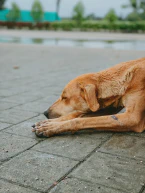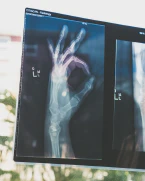Community vs. Rare Diseases

The Worst Christmas: A Diagnosis That Terrified Us
The holiday season is a time of joy, celebration, and spending time with loved ones. But for Sharon Terry and her family, Christmas of 1994 was the worst they had ever experienced. As Terry recounts in her TED Talk, it was the day she received a diagnosis that would change her family’s life forever.
Terry’s daughter, Elizabeth, had been showing signs of a rash on the sides of her neck for a couple of years. Concerned about her daughter’s health and with a family history of cancer, Terry took Elizabeth to a dermatologist. Two days before Christmas in 1994, the dermatologist diagnosed Elizabeth with pseudoxanthoma elasticum (PXE), a rare genetic disorder that causes loose, wrinkly skin and can lead to legal blindness and cardiovascular problems.
Terry and her husband, Pat, were devastated. They had never heard of PXE and were not prepared for the news. The doctors informed them that little was known about the disease and that some people with it die in their 30s. They felt helpless and scared.
The diagnosis was especially difficult for Terry and her family because they had no background in science or medicine. They felt like they were in over their heads and didn’t know where to turn for help. But they were determined to find a solution.
Over the next few years, Terry and her husband embarked on a journey to learn everything they could about PXE. They pored over medical textbooks and scientific articles, trying to make sense of the disease and find a way to help their daughter and others like her. They established a nonprofit organization, PXE International, to initiate research, conduct studies, and support individuals with the disease.
Terry’s experience highlights the importance of raising awareness about rare diseases and the need for more research and collaboration to find treatments and cures. It also shows the power of a parent’s love and determination to make a difference in the face of adversity.
Pseudoxanthoma Elasticum: A Rare, Systemic Disease
Pseudoxanthoma elasticum (PXE) is a rare, genetic disorder that affects the skin, eyes, and cardiovascular system. As Sharon Terry explains in her TED Talk, PXE causes loose, wrinkly skin in the flexor areas, similar to premature aging. It can also cause legal blindness, like macular degeneration, and a host of cardiovascular problems.
PXE is a systemic disease, meaning that it affects multiple parts of the body. It is caused by a mutation in the ABCC6 gene, which provides instructions for making a protein that helps transport certain molecules out of cells. Without this protein, calcium and other minerals can build up in the elastic fibers of the skin, eyes, and blood vessels, leading to the characteristic symptoms of PXE.
PXE is a rare disease, with an estimated prevalence of 1 in 25,000 to 1 in 100,000 people worldwide. Because it is so rare and little is known about it, many doctors may not be familiar with it and may misdiagnose patients or fail to diagnose it at all.
Terry’s experience with PXE highlights the need for more research and collaboration to understand rare diseases and find treatments and cures. It also emphasizes the importance of patient advocacy and giving power, as Terry and her husband took matters into their own hands to learn about the disease and work toward finding solutions.
As with many rare diseases, PXE can be isolating and overwhelming for patients and their families. But with continued research and advocacy, there is hope for a brighter future for those affected by PXE and other rare diseases.
The Lack of Understanding and Research on PXE
Pseudoxanthoma Elasticum (PXE) is a rare genetic disorder that causes premature aging and cardiovascular problems, as well as legal blindness, like macular degeneration. However, little is known about the disease, and there was no systematic effort to understand it. The lack of understanding about PXE was further compounded by the lack of sharing in biomedical research. Researchers competed with each other, and there was no mechanism to encourage collaboration or information sharing among scientists.
This lack of understanding and research on PXE motivated a group of parents of children with PXE to take matters into their own hands. Despite having no science background, they took on the challenge of finding a solution for their children and others like them. The parents founded PXE International, a nonprofit organization that initiated research and conducted it on PXE, and also supported individuals with the disease.
The parents started by collecting blood and medical histories from around 100-150 people worldwide, who had PXE, and brought all of that information together. However, this shared resource was not enough, so they decided to do hardcore bench science. They borrowed bench space at a lab at Harvard and worked with generous postdocs who tutored them as they went along.
Their hard work paid off within a few years, as they found the gene responsible for PXE. They patented it to make it freely available and created a diagnostic test. They put together a research consortium and found over 4,000 people around the world who had PXE, conducting clinical trials and studies.
This experience showed that there was a lack of understanding and research on PXE and motivated the group to do something about it. They took the initiative to collaborate, share information, and work together to find a solution for their children and others like them. This example shows that citizen scientists, activists, and others who use crowdsourcing and do-it-yourself science can change the game when it comes to rare diseases.
Overcoming Barriers: The Power of Sharing and Collaboration
The speaker and her husband faced two major barriers: they had no science background, and researchers did not share their data. They realized that they had to take the research into their own hands and create a shared resource for people with PXE. They founded PXE International, a nonprofit dedicated to initiating research and conducting it on PXE, as well as supporting individuals with the disease. They collected blood and medical histories and required that all scientists using these resources would share results with each other and with the people who donated.
They found that this shared resource was not enough and decided to do hardcore bench science. They borrowed bench space at a lab at Harvard and with the help of generous postdocs, extracted DNA, ran and scored gels, and searched for the gene. Within a few years, they found the gene, patented it so that it would be freely available, and created a diagnostic test. They put together a research consortium, held research meetings, and opened a center of excellence.
Through all this, they lived with fear - fear of the disease breathing down their neck while the clock ticked, fear of researchers, fear that they were making the wrong choices. But greater than all these fears was their drive to make a difference for their kids and for all those they had met along the way. They realized that what they were doing for one disease, they should do for all diseases. They joined with and eventually led Genetic Alliance, a network of health advocacy, patient advocacy, research, and health organizations.
They built scalable and extensible resources like biobanks, registries, and directories of support for all diseases. They experimented with what it would take to transform the crusty systems of healthcare. Their goal was to work without boundaries, to dissolve the “us vs. them” mentality that permeates the scientific and medical communities. They challenged researchers, clinicians, and administrators to take risks, to recognize that people are at the center of the work they do.
They realized that the answers lie in all of us, donating our data, our biological samples, and ultimately ourselves. They encouraged citizen scientists, activists, and hackers who are using crowdsourcing and DIY science to change the game. They believed that working on our inner lives is working on our outer lives and that when we turn with gentle curiosity toward our fears, we find enormous wealth within ourselves and others, and the ability to step into challenges we never thought we could.
Their message was clear: there is no limit to what we can accomplish together if we hug the things that scare us and find the love at the center.
PXE International: A Non-Profit Dedicated to Research and Support
PXE International is a non-profit organization founded by a couple who decided to take matters into their own hands and do something to find a solution to a rare and debilitating disease affecting their children, Pseudoxanthoma Elasticum (PXE). The organization is dedicated to researching PXE and supporting individuals with the disease.
PXE International’s mission is to initiate research, conduct it, and support individuals with PXE. They collect blood and medical histories from people around the world, which they use to support their research. They also hold patient meetings, clinical trials, and studies. Their efforts have resulted in the discovery of the PXE gene, the creation of a diagnostic test, and the establishment of a research consortium.
The organization was founded at a time when researchers did not share data, and there was little understanding of the disease. To overcome these barriers, the founders established a shared resource of blood and medical histories, and required that all scientists using the resources would share results with each other and with the people who donated. They also decided to do hardcore bench science to find solutions for the disease themselves, despite not having a science background.
Through the years, PXE International has made tremendous progress. They have helped thousands of people with PXE worldwide and established a center of excellence. Their work has paved the way for progress in other rare diseases as well. PXE International’s story shows that with determination, collaboration, and support, it is possible to make a difference and find solutions to even the rarest of diseases.
Transforming Healthcare: Working Without Boundaries
PXE International not only helps patients and families cope with PXE but also works to transform healthcare by partnering with researchers, clinicians, and industry leaders. They believe in breaking down boundaries and working collaboratively to find solutions.
One example of this is their biennial conference, which brings together experts from various fields to share knowledge, research, and strategies. The conference also provides a space for patients and families to connect with each other and learn about the latest advancements in PXE research and treatment.
PXE International also uses technology to connect patients with healthcare professionals regardless of their geographic location. They have developed an online registry that allows patients to share their medical history and participate in research studies. They have also created an online support network where patients and families can connect with others who have PXE and share information and experiences.
By working without boundaries and harnessing the power of technology, PXE International is helping to transform healthcare and improve the lives of those affected by PXE.
Facing Our Fears and Hugging Love to Make a Difference
Living with a rare disease like PXE can be incredibly difficult, both physically and emotionally. It’s easy to feel isolated and alone, but it’s important to remember that there are others out there who are going through the same thing.
One of the key messages from the video is the importance of facing our fears and hugging love to make a difference. This means being open and honest about our struggles, and seeking support from those around us. It also means being willing to get involved and make a difference in our communities.
The speaker in the video shared her own personal journey of overcoming her fears and finding strength in her community. She talked about how being open and honest about her diagnosis helped her to connect with others who were going through the same thing, and how this sense of community gave her the courage to get involved and make a difference.
One of the most inspiring moments of the video was when the speaker talked about how her diagnosis had brought her closer to her family. She shared how her husband had become her caregiver, and how this had brought them even closer together. She also talked about how her diagnosis had given her a new perspective on life, and how it had inspired her to make the most of every moment.
In conclusion, living with a rare disease like PXE can be incredibly challenging, but it’s important to remember that we’re not alone. By facing our fears, hugging love, and getting involved in our communities, we can make a difference and help to raise awareness about these rare diseases.
The Path Forward: Inner Work and Outer Work as One
The path forward for anyone facing a difficult situation, especially a rare disease, can be uncertain and overwhelming. It can be challenging to navigate the emotional and physical toll of the situation, while also advocating for yourself and finding ways to make a difference. In the video, the speaker shares how she found a way forward through a combination of inner work and outer work.
Inner work involves the emotional and mental processing necessary to cope with a difficult situation. The speaker found that therapy and mindfulness practices helped her to work through her fears and emotions related to her diagnosis. By addressing her inner struggles, she was able to feel more equipped to take on the outer work of advocating for herself and others with PXE.
Outer work involves taking action to create change in the world. The speaker became involved with PXE International, a non-profit organization dedicated to raising awareness and funding for research related to PXE. She also became an advocate for rare disease patients, speaking out about the need for more research and resources for those facing similar challenges.
The speaker emphasizes the importance of combining inner work and outer work, as they are interconnected and can support each other. By addressing her own fears and emotions, she was able to approach her outer work with more clarity and focus. Additionally, by taking action and making a difference in the world, she found a sense of purpose and fulfillment that helped her to continue on her path forward.
The path forward for those facing rare diseases can be uncertain and overwhelming, but by combining inner work and outer work, it is possible to find a way to cope and create positive change.
Conclusion
The journey of living with a rare disease like pseudoxanthoma elasticum can be daunting, but the story of overcoming barriers and hugging love to make a difference is truly inspiring. The lack of understanding and research surrounding PXE has created a difficult environment for patients and their families. However, organizations like PXE International have stepped up to fill the gap, providing not only critical resources and support but also a sense of community for those affected by the disease.
The power of sharing and collaboration cannot be underestimated in the fight against rare diseases. By working together, patients, caregivers, researchers, and healthcare professionals can help bridge the gap between knowledge and treatment. Transforming healthcare requires breaking down boundaries and creating new paths forward, as well as focusing on inner work and outer work as one.
Above all, the journey of living with a rare disease teaches us the importance of facing our fears and hugging love. It is through the courage and toughness of those who live with PXE that we can find inspiration to make a difference in the world around us. By raising awareness and supporting research, we can help ensure that rare diseases like PXE do not go unnoticed, and those who live with them can receive the care and resources they need to live their best lives.











